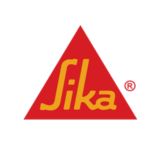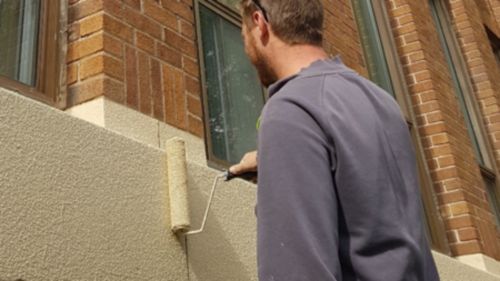07/02/2022
Is it possible to paint a facade (masonry or concrete) without harming it? What matters is using the right product!
Discover the remarkable properties of mineral paint!
Paint and Facade - How to Reconcile Them?
You have probably heard that you should never paint a masonry façade! As a matter of fact, this is not recommended, unless you use the right product... Have you ever had a chance to observe painted masonry or concrete façades?
The effect may look quite refreshing at first sight, but after a short period of time the result will be quite different: peeling and loss of adhesion of the paint will occur. Not only is it unesthetic, but applying an inappropriate paint can create even more damage, as all the moisture trapped between the paint and the substrate will eventually damage the latter. (fig, I)
When it is necessary to give a new look to a façade, it is possible to do so by selecting the right product, one that will not only be long-lasting, but that will not have a damaging impact, such as the facade’s deterioration.
Clementina Dumitrescu
Civil Engineering Technologist
Technical Representative, Sika Canada
This text was written by Clementina Dumitrescu
First, there are two large families of paint : Organic and Inorganic (Mineral) Paints
Organic paints are the ones we all know (acrylic, latex, or older ones like oil); they are industrial paints that are made from chemicals and relying on the principle of mechanical adhesion, like a glue on the surface; it is a bit like “suffocating” the support on which it is applied.
Mineral paints are first characterized by their adhesion principle called “silicification,” a process by which the paint and the support are chemically combined with each other and become indissociable. This fusion reaction allows the substrate to breathe.
Let’s Explore The Composition Of Mineral Paint
First, there is the binder itself, potassium silicate (a quartz derivative), also known as “liquid glass.” Added to this bonding agent are the extenders that give the paint its layer density, necessary to protect the surfaces from the weather. Then natural and inorganic pigments bring the colouring. Finally, other additives are also incorporated to help regulate certain characteristics such as the consistency of the paint (or dye) and its water-repellent capability.
Let’s Learn About The Qualities Of Mineral Paint
Durability: The fusion adhesion of the paint with its substrate allows an unmatched resistance to weather and aging. The bonding agent itself (potassium silicate) and the pigments used have a very good resistance to UV rays.
Permeability: Surfaces covered with mineral paints allow walls to breathe, as water droplets circulate through the pores allowing quick drying. Combined with a low absorption of liquid water, this property offers optimal protection against external influences such as rain, heat, cold, freeze/thaw cycles and pollutants.
Anti-mould properties: No formation of condensation on the surface of the walls, which prevents the appearance of algae and mould.
Aesthetic: Mineral paints are brighter. The pigments are coated in potassium silicate which is transparent, their purity is considerably more radiant.
Reaction to fire: Mineral paints are nonflammable.
Substainability: From producing raw materials without volatile organic compounds (VOCs) or solvents, to applying them safely and their durability over time, mineral paints have a relatively low environmental impact.
Whether it is for historic or modern buildings, these many advantages must be taken into consideration.
Use
Since its invention in 1878 by Adolf Wilhem Keim in Germany, the product has evolved over the years, and several generations of products have therefore emerged to produce a ready-to-use paint for different needs.
These silicate paints come in several products to meet the diversity of substrates and situations to be treated, the necessary protection and the desired aesthetics. Their application can be made on any mineral substrate, such as brick, concrete, natural stones, coatings, parging.
It is possible to use either a paint or a dye.
The paints have a creamy, opaque and more concentrated consistency
The dyes have a much more fluid consistency, closer to the water. It is possible to dilute the colour in order to obtain a transparency effect and to maintain a more natural appearance (Fig.2)
Paints and dyes can be applied with a brush, a roller or can be sprayed.
For generations, mineral paints have been the absolute reference, while still being relevant, they are highly appreciated in sustainable construction.
In conclusion, whether it is a restoration, protection or transformation project, it is actually possible to paint a facade without damaging it; is simply a matter of making the right choice!
BUILDING TRUST WHEN IT COMES TO BUILDING FINISHING
Sika Canada Inc. is proud to unveil its new entity dedicated to Building Finishing

